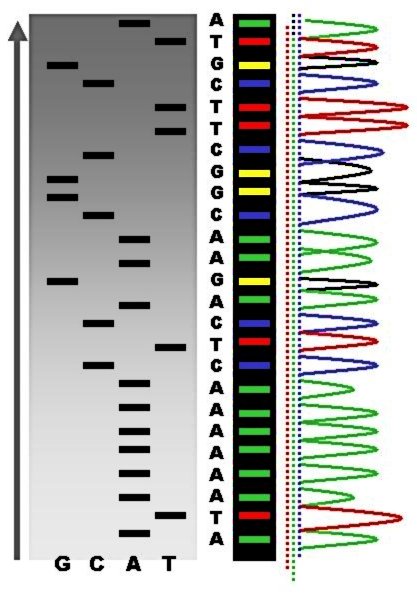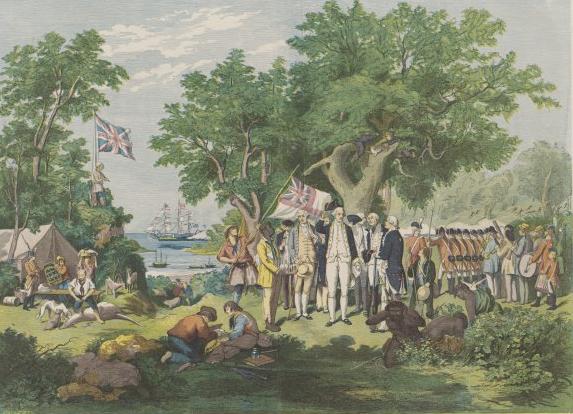|
Saiphos
''Saiphos equalis'', commonly known as the yellow-bellied three-toed skink or simply three-toed skink, is a species of burrowing skink found in eastern Australia. It is the only species classified under the genus ''Saiphos''. The lizard has attracted scientific attention due to its dual reproduction habits of producing young via eggs in coastal populations, or via live young in colder mountain regions.Marshall,M., Live birth, evolving before our eyes, ''New Scientist'', 25 August 2010/ref> Description ''Saiphos equalis'' grows to a length of including the tail. It has a brown back and an orange belly. The skink is active at night, and feeds on insects. Along the coastal lowlands of Australia, the skink has been observed laying eggs and giving birth to live young for reproduction. Individuals of the species in the lowlands lay eggs (oviparous), while its neighbors to the north in the mountains are almost exclusively giving birth to live young (viviparous). Taxonomy and nomencla ... [...More Info...] [...Related Items...] OR: [Wikipedia] [Google] [Baidu] |
Coeranoscincus Reticulatus
The three-toed snake-tooth skink (''Coeranoscincus reticulatus'') is a species of skink in the family Scincidae. It is endemic to south-eastern Queensland and north-eastern New South Wales, Australia. It occurs in subtropical rainforest, wet sclerophyll forest, and montane forest on rich dark soils on the coast and adjacent ranges; some coastal/island populations (Fraser Island and Cooloola) occur on pale sands in lowlands. ''Coeranoscincus reticulatus'' measure in snout–vent length Snout–vent length (SVL) is a morphometric measurement taken in herpetology from the tip of the snout to the most posterior opening of the cloacal slit (vent)."direct line distance from tip of snout to posterior margin of vent" It is the most c .... The limbs are reduced with three digits in each. References Coeranoscincus Skinks of Australia Endemic fauna of Australia Reptiles of New South Wales Reptiles of Queensland Reptiles described in 1873 Taxa named by Albert Günther Taxo ... [...More Info...] [...Related Items...] OR: [Wikipedia] [Google] [Baidu] |
Skink
Skinks are lizards belonging to the family Scincidae, a family in the infraorder Scincomorpha. With more than 1,500 described species across 100 different taxonomic genera, the family Scincidae is one of the most diverse families of lizards. Skinks are characterized by their smaller legs in comparison to typical lizards and are found in different habitats except arctic and subarctic regions. Description Skinks look like lizards of the family Lacertidae (sometimes called ''true lizards''), but most species of skinks have no pronounced neck and relatively small legs. Several genera (e.g., '' Typhlosaurus'') have no limbs at all. This is not true for all skinks, however, as some species such as the red-eyed crocodile skink have a head that is very distinguished from the body. These lizards also have legs that are relatively small proportional to their body size. Skinks' skulls are covered by substantial bony scales, usually matching up in shape and size, while overlapping. Other ... [...More Info...] [...Related Items...] OR: [Wikipedia] [Google] [Baidu] |
Bimodal Reproduction
Bimodal reproduction is the ability of a vertebrate animal to reproduce by both laying eggs and giving birth. Examples of these animals include Saiphos equalis ''Saiphos equalis'', commonly known as the yellow-bellied three-toed skink or simply three-toed skink, is a species of burrowing skink found in eastern Australia. It is the only species classified under the genus ''Saiphos''. The lizard has attr ... and Zootoca vivipara, References {{reflist Reproduction in animals ... [...More Info...] [...Related Items...] OR: [Wikipedia] [Google] [Baidu] |
Glenn Michael Shea
{{disambiguation, geo ...
Glenn may refer to: Name or surname * Glenn (name) * John Glenn, U.S. astronaut Cultivars * Glenn (mango) * a 6-row barley variety Places In the United States: * Glenn, California * Glenn County, California * Glenn, Georgia, a settlement in Heard County * Glenn, Illinois * Glenn, Michigan * Glenn, Missouri * University, Orange County, North Carolina, formerly called Glenn * Glenn Highway in Alaska Organizations * Glenn Research Center, a NASA center in Cleveland, Ohio See also * New Glenn, a heavy-lift orbital launch vehicle * * *Glen, a valley *Glen (other) A glen is a valley, typically one that is long, deep, and often glacially U-shaped, usually in Scotland. Glen may also refer to: People * Glen (given name) * Glen (surname) Places * River Glen (other); covering "Glen (river)", "River G ... [...More Info...] [...Related Items...] OR: [Wikipedia] [Google] [Baidu] |
Subfamily
In biological classification, a subfamily ( Latin: ', plural ') is an auxiliary (intermediate) taxonomic rank, next below family but more inclusive than genus. Standard nomenclature rules end subfamily botanical names with "-oideae", and zoological names with "-inae". See also * International Code of Nomenclature for algae, fungi, and plants The ''International Code of Nomenclature for algae, fungi, and plants'' (ICN) is the set of rules and recommendations dealing with the formal botanical names that are given to plants, fungi and a few other groups of organisms, all those "trad ... * International Code of Zoological Nomenclature * Rank (botany) * Rank (zoology) Sources {{biology-stub ... [...More Info...] [...Related Items...] OR: [Wikipedia] [Google] [Baidu] |
DNA Sequencing
DNA sequencing is the process of determining the nucleic acid sequence – the order of nucleotides in DNA. It includes any method or technology that is used to determine the order of the four bases: adenine, guanine, cytosine, and thymine. The advent of rapid DNA sequencing methods has greatly accelerated biological and medical research and discovery. Knowledge of DNA sequences has become indispensable for basic biological research, DNA Genographic Projects and in numerous applied fields such as medical diagnosis, biotechnology, forensic biology, virology and biological systematics. Comparing healthy and mutated DNA sequences can diagnose different diseases including various cancers, characterize antibody repertoire, and can be used to guide patient treatment. Having a quick way to sequence DNA allows for faster and more individualized medical care to be administered, and for more organisms to be identified and cataloged. The rapid speed of sequencing attained with m ... [...More Info...] [...Related Items...] OR: [Wikipedia] [Google] [Baidu] |
Queensland
) , nickname = Sunshine State , image_map = Queensland in Australia.svg , map_caption = Location of Queensland in Australia , subdivision_type = Country , subdivision_name = Australia , established_title = Before federation , established_date = Colony of Queensland , established_title2 = Separation from New South Wales , established_date2 = 6 June 1859 , established_title3 = Federation of Australia, Federation , established_date3 = 1 January 1901 , named_for = Queen Victoria , demonym = , capital = Brisbane , largest_city = capital , coordinates = , admin_center_type = Administration , admin_center = Local government areas of Queensland, 77 local government areas , leader_title1 = Monarchy of Australia, Monarch , leader_name1 = Charles III , leader_title2 = Governor of Queensland, Governor , leader_name2 = Jeannette Young , leader_title3 = Premier of Queensland, Premier , leader_name3 = Annastacia Palaszczuk (Australian Labor Party (Queensland Branch), AL ... [...More Info...] [...Related Items...] OR: [Wikipedia] [Google] [Baidu] |
New South Wales
) , nickname = , image_map = New South Wales in Australia.svg , map_caption = Location of New South Wales in AustraliaCoordinates: , subdivision_type = Country , subdivision_name = Australia , established_title = Before federation , established_date = Colony of New South Wales , established_title2 = Establishment , established_date2 = 26 January 1788 , established_title3 = Responsible government , established_date3 = 6 June 1856 , established_title4 = Federation , established_date4 = 1 January 1901 , named_for = Wales , demonym = , capital = Sydney , largest_city = capital , coordinates = , admin_center = 128 local government areas , admin_center_type = Administration , leader_title1 = Monarch , leader_name1 = Charles III , leader_title2 = Governor , leader_name2 = Margaret Beazley , leader_title3 = Premier , leader_name3 = Dominic Perrottet ( Liberal) , national_representation = Parliament of Australia , national_representation_type1 = Sen ... [...More Info...] [...Related Items...] OR: [Wikipedia] [Google] [Baidu] |
Clade
A clade (), also known as a monophyletic group or natural group, is a group of organisms that are monophyletic – that is, composed of a common ancestor and all its lineal descendants – on a phylogenetic tree. Rather than the English term, the equivalent Latin term ''cladus'' (plural ''cladi'') is often used in taxonomical literature. The common ancestor may be an individual, a population, or a species (extinct or extant). Clades are nested, one in another, as each branch in turn splits into smaller branches. These splits reflect evolutionary history as populations diverged and evolved independently. Clades are termed monophyletic (Greek: "one clan") groups. Over the last few decades, the cladistic approach has revolutionized biological classification and revealed surprising evolutionary relationships among organisms. Increasingly, taxonomists try to avoid naming taxa that are not clades; that is, taxa that are not monophyletic. Some of the relationships between org ... [...More Info...] [...Related Items...] OR: [Wikipedia] [Google] [Baidu] |
Monophyletic
In cladistics for a group of organisms, monophyly is the condition of being a clade—that is, a group of taxa composed only of a common ancestor (or more precisely an ancestral population) and all of its lineal descendants. Monophyletic groups are typically characterised by shared derived characteristics ( synapomorphies), which distinguish organisms in the clade from other organisms. An equivalent term is holophyly. The word "mono-phyly" means "one-tribe" in Greek. Monophyly is contrasted with paraphyly and polyphyly as shown in the second diagram. A ''paraphyletic group'' consists of all of the descendants of a common ancestor minus one or more monophyletic groups. A '' polyphyletic group'' is characterized by convergent features or habits of scientific interest (for example, night-active primates, fruit trees, aquatic insects). The features by which a polyphyletic group is differentiated from others are not inherited from a common ancestor. These definitions have t ... [...More Info...] [...Related Items...] OR: [Wikipedia] [Google] [Baidu] |
Ophioscincus
''Ophioscincus'' is a genus of skink known to inhabit parts of Australia."''Ophioscincus'' ". The Reptile Database. www.reptile-database.org. Classification *''Ophioscincus cooloolensis'' Greer & Cogger, 1985 Cooloola snake-skink *''Ophioscincus ophioscincus'' (Boulenger, 1887) Yolk-bellied snake-skink *''Ophioscincus truncatus The short-limbed snake-skink (''Ophioscincus truncatus'') is a species of burrowing short-limbed snake-skink that is endemic to the coastal areas and islands of New South Wales and Queensland ) , nickname = Sunshine State , image_map = Quee ...'' (Peters, 1876) Short-limbed snake-skink References Reptiles of Australia skink pageListing of Australian Skinks Ophioscincus Lizard genera Skinks of Australia Taxa named by Wilhelm Peters {{skink-stub ... [...More Info...] [...Related Items...] OR: [Wikipedia] [Google] [Baidu] |
Taxa
In biology, a taxon ( back-formation from '' taxonomy''; plural taxa) is a group of one or more populations of an organism or organisms seen by taxonomists to form a unit. Although neither is required, a taxon is usually known by a particular name and given a particular ranking, especially if and when it is accepted or becomes established. It is very common, however, for taxonomists to remain at odds over what belongs to a taxon and the criteria used for inclusion. If a taxon is given a formal scientific name, its use is then governed by one of the nomenclature codes specifying which scientific name is correct for a particular grouping. Initial attempts at classifying and ordering organisms (plants and animals) were set forth in Carl Linnaeus's system in ''Systema Naturae'', 10th edition (1758), as well as an unpublished work by Bernard and Antoine Laurent de Jussieu. The idea of a unit-based system of biological classification was first made widely available in 1805 in the ... [...More Info...] [...Related Items...] OR: [Wikipedia] [Google] [Baidu] |




